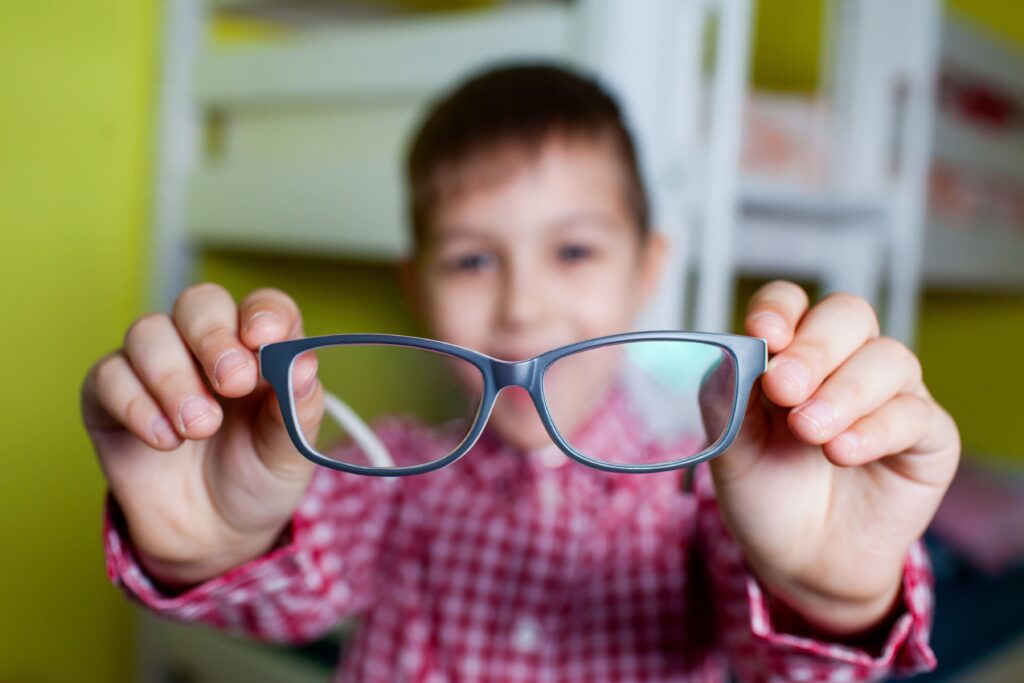Myopia, otherwise known as nearsightedness, is a common vision condition that impacts millions of people worldwide. Because myopia is a refractive error that affects the physical shape of your eye, it cannot be cured. However, several treatment options can correct the changes it makes to an individual’s vision. There are also myopia control methods that can help slow its progression down in children to minimize the risk of future complications.
Myopia isn’t the only thing that can cause blurry vision, so it’s crucial that you or your child see your eye doctor for an examination to determine the exact cause of the vision issues.
Understanding Myopia
Myopia is a refractive error in which an individual sees close objects clearly, but distant objects appear blurry. This vision change occurs when the eye grows too long from front to back, causing light to focus in front of the retina instead of directly on it.
This refractive error typically develops in childhood and can progress as the eye grows.
Causes & Risk Factors
The exact cause of myopia is not fully understood, but genetics and environmental factors play significant roles in its development. Children with parents who have myopic eyes are more likely to develop myopia themselves, and interestingly, this risk increases if both parents have myopia. Spending less time outdoors, engaging in excessive near-work activities such as reading, and prolonged screen time can also contribute to the onset or progression of myopia.
Take a few minutes to do our myopia quiz if you’re concerned that your child may have myopia or wondering if they’re at risk of progression.
Impact on Vision
The impact of myopia on an individual’s vision can vary from mild to severe, and uncorrected myopia can lead to eye strain and headaches. Higher degrees of myopia are associated with an increased risk of certain eye conditions like retinal detachment, cataracts, and glaucoma, which can all significantly affect one’s vision. These increased risks highlight the importance of early intervention.
Myopia Control for Children
Because myopia often develops during childhood, early intervention is key in managing its progression effectively.
Preventative Measures
Parents and guardians play a crucial role in implementing preventative measures to protect their children’s vision. Encouraging a diet rich in eye-healthy nutrients, a good balance between screen time and outdoor activities, and regular eye exams are vital in spotting myopia early.
MiSight Contact Lenses
MiSight 1-Day contact lenses are daily disposable contacts specially designed for children between the ages of 8 and 12 years old. These contacts can slow the progression of myopia while providing clearer vision for your child.
MiYOSMART Glasses
MiYOSMART glasses lenses are another convenient option for myopia control. MiYOSMART lenses are effective—they are proven to slow the progression of myopia by 60% in children. The lenses can be fit into any pair of glasses frames, and they are also anti-reflective and durable.
Orthokeratology
Orthokeratology involves wearing specially designed gas-permeable contact lenses overnight to reshape the cornea. This allows for clearer vision during the day without needing corrective eyewear. This non-surgical approach is temporary but can be an effective alternative, particularly for those uncomfortable with regular contact lens use.
Research shows that ortho-k has a 50% myopia control effect, meaning it can slow down myopia progression by around half compared to using a standard single-vision lens.
Atropine Eye Drops
Atropine eye drops control myopia by dilating the pupils and temporarily paralyzing the focusing muscles inside the eye. This process helps control the progression of myopia, particularly in children.
Research has demonstrated the use of low-dose atropine has been an effective treatment regimen for slowing down myopic progression. And low-dose atropine has very few side effects, making it a desirable myopia management method in many cases.
Correction Options
For many with myopia, the main concern is finding the right treatment to improve their vision and quality of life. It’s helpful to know about several approaches to correcting myopia because there isn’t a cure.
Corrective Lenses
Eyeglasses and contact lenses are the most common and immediate solutions for myopia. They can help correct vision and are available in various designs, including single-vision, bifocal, and multifocal. All these are based on the individual’s specific vision needs.
Refractive Surgery
Refractive surgical procedures, such as LASIK and PRK, can reshape the cornea to reduce the need for eyeglasses or contact lenses. These procedures have been successful in many cases and provide a more permanent solution to myopia.
Dispelling Myopia Myths
Misunderstandings about myopia can lead to confusion and inaction. It’s essential to separate fact from fiction to make informed decisions about myopia management.
Common Misconceptions
Many myths surround myopia. One common misconception is the belief that wearing glasses makes myopia worse, which isn’t true. In fact, not wearing the necessary corrective lenses may lead to headaches and eye strain and exacerbate vision problems.
Facts vs. Myths
Another myth is that eye exercises can cure myopia. While eye exercises can help alleviate symptoms of eye strain, they do not change the eye’s physical structure. So, eye exercises cannot treat myopia.
Discuss the Next Steps with Your Eye Doctor
Navigating myopia and its management is an individualized process that requires professional guidance and a tailored approach. While a definitive cure for myopia remains unknown, numerous effective treatments can provide clear vision and a high quality of life.
Call our team at Total Focus Optometry today to book your or your child’s eye exam. After the examination, your eye doctor can review the available myopia control or correction options.



